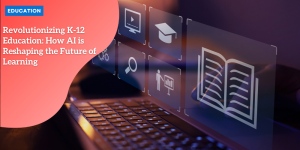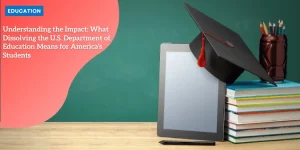Teaching, Equity, and the Crisis in U.S. Education: A Deepening Divide

Budget Cuts, Political Clashes, and the Fight for Inclusive Learning in a Shifting America
Teaching, Leading, and Social Justice
In recent years, the U.S. education landscape has faced mounting tensions, with significant scrutiny directed at federal leadership and its approach to public schooling.
Anúncios
One of the central figures in this debate has been Education Secretary Linda McMahon.
During a House Appropriations Committee hearing, Democrats confronted McMahon with sharp criticism, accusing her of unilaterally slashing critical educational funding and undermining the very agency she leads.
Representative Rosa DeLauro of Connecticut decried these actions as a violation of congressional authority, stating, “By recklessly incapacitating the department you lead, you are usurping Congress’s authority and infringing on Congress’s power of the purse.”
Anúncios
The gravity of these concerns reflects a broader conflict over the federal role in public education, particularly when administrative decisions are perceived to bypass legislative oversight and undermine vital programs.
Legal challenges are expected to continue, as lawmakers vow to contest the dismantling of educational infrastructure.
California Teachers Mobilize Against Funding Cuts
On the frontlines of advocacy, more than 15,000 teachers and education supporters rallied across California to protest the federal government’s proposed budget reductions.
Anúncios
Spearheaded by the California Teachers Association (CTA), these demonstrations highlighted the urgency of protecting the $16 billion in federal funding allocated to the state’s public schools.
Addressing participants in San Diego, CTA President David Goldberg asserted, “Fighting back against the cuts proposed by the federal administration is OUR fight, and one we must lead as educators.”
The Impact on Future Educators
The February decision by the Trump administration to eliminate $600 million in federal education funding sent shockwaves through teacher training programs nationwide.
Justified by officials as an effort to eliminate what they described as “divisive ideologies,” the move jeopardized longstanding initiatives focused on diversity, equity, and inclusion.
However, education advocates argue that these programs have been instrumental in recruiting and training a diverse and competent teacher workforce.
Paul Lemle, president of the Maryland State Education Association, emphasized, “Federal actions are going in the wrong direction and will make the educator shortage worse.”
Research consistently shows that students, especially Black students, benefit from having teachers who reflect their cultural and racial backgrounds.
These benefits include higher graduation rates, improved social-emotional development, and increased college aspirations.
Language, Culture, and Educational Choices
In a powerful human story reflecting the hopes tied to U.S. schools, José Alberto González and his family endured hardship in pursuit of educational opportunities for their children.
Despite facing the threat of deportation and living in seclusion in Denver, González’s wife continued to take their children to school each day.
The promise of learning English and integrating into American academic life had driven them to make the perilous journey from Venezuela.
Their story underscores the sacrifices immigrant families make for access to U.S. education—and the vulnerability they face amid changing immigration policies.

Post-COVID Challenges: Discipline vs. Safety
A recent policy brief from the National Education Policy Center examined the complex relationship between student behavior, school discipline, and safety in a post-pandemic environment.
The report emphasized that policies conflating discipline with safety have led to disproportionate harm for students of color.
Exclusionary practices, surveillance, and zero-tolerance measures, often intensified by federal mandates since the 1990s, have failed to produce safer school environments.
Instead, the brief advocates for policies grounded in restorative justice and trauma-informed care—approaches that support students rather than punish them.
By decoupling safety from discipline, schools can adopt strategies that address behavioral challenges while fostering inclusive communities.
Multilingualism and the American Identity
Graciela Mochkofsky’s reflections on life in New York City highlight the richness of linguistic diversity in urban America.
Upon relocating from Argentina, Mochkofsky and her family found comfort in a multilingual community where Spanish coexisted with dozens of other languages.
Her son now speaks three languages, attending schools that celebrate multiculturalism.
This experience stands in contrast to ongoing national debates about whether the United States should adopt English as its official language.
For many families, linguistic diversity is not only an asset but also a defining aspect of American identity—one that fosters inclusion and global perspective.
Global Consequences of U.S. Funding Cuts
In Mali, U.S. funding cuts have had far-reaching effects. A program known as “Shifin ni Tagne,” meaning “our future,” once provided literacy training to 20,000 youth in local languages.
That initiative was halted after the Trump administration slashed 90% of foreign aid managed by USAID.
Aminata Doumbia, one of the program’s participants, lamented the loss of an opportunity to train as a pastry chef, expressing a profound sense of despair.
Programs like these serve as reminders that U.S. education funding can have a global impact, particularly in developing regions where local empowerment and literacy efforts are heavily reliant on international support.
Healthy School Meals and Program Cancellations
At a local elementary school in Tucson, Arizona, children once enjoyed fresh produce through the USDA’s Local Food for Schools Cooperative Agreement Program.
That initiative, which was poised to invest $660 million in school meals and childcare centers in 2025, was abruptly canceled by the Trump administration.
RFK Jr., a vocal advocate for nutritional equity, condemned the decision, urging that healthy meals be considered a right, not a luxury.
Medicaid Cuts and Pediatric Care
In Kentucky, pediatric cardiologist Dr. Allison Black expressed deep concern over Medicaid cuts that could affect half the state’s children.
As someone who provides life-saving care to infants and children with congenital heart defects, Dr. Black emphasized that healthcare policy is inseparable from education and child development.
Budget decisions that restrict healthcare access inevitably impact student well-being and academic success.
The Child Care Crisis and Its Definitions
With child care costs soaring, questions have arisen around what defines “quality” in early education.
Parents, researchers, and policymakers remain divided over whether caregiver credentials or child happiness should be prioritized.
As federal funds for Head Start and other programs face elimination, the debate over affordability and educational value has intensified.
Jackie Stephens, a parent who benefited from Head Start, fears losing a program that supported her family with parenting guidance and nutritional support.
The proposed elimination of $12.3 billion in funding threatens a cornerstone of early childhood education in America.
Layoffs and the Federal Aid Bottleneck
The U.S. Department of Education’s workforce reductions have already begun to impact students.
According to a May 21 survey of 900 colleges, administrative delays have created obstacles for students seeking federal aid.
The ripple effects of staffing shortages reveal how crucial infrastructure is to supporting access to higher education.
Education, Inequality, and Class Divide
In the United Kingdom, studies have revealed a deep dissatisfaction among working-class students, with the widest gaps in life satisfaction occurring between the wealthiest and poorest teens.
Diane Reay’s work critiques how systemic inequality continues to deprive disadvantaged children of meaningful educational experiences—a dynamic mirrored in many parts of the U.S.
In the U.S., Katherine Cramer and Jason Mangone argue that Americans are divided not only by politics but by class.
Socioeconomic segregation means that wealthy and poor families live in separate worlds, with education outcomes increasingly reflecting these divisions.
| 🧩 Theme | Key Insight | Real-World Example |
|---|---|---|
| ✊ Racial Inequality | Persistent disparities and skepticism about achieving racial equity, even after decades of advocacy | Akilah Monifa’s experience and Pew Research data reflect growing pessimism in the Black community |
| 📚 Education Culture Wars | Ideological conflicts over what should be taught in American schools | Creationist Ark in Kentucky; federal backlash against inclusive teaching in Virginia |
| ⚖️ Legal Pushback | Court challenges and rulings are shaping the boundaries of classroom discussions | California court temporarily blocks CRT ban, citing teacher rights |
| 🗣️ Student Voices | Young activists highlight safe, inclusive spaces as crucial to mental well-being | AERA Open study documents “pockets of humanity” where justice and empathy are central |
Conclusion: Toward an Inclusive and Equitable Educational Future
The education debates of today are shaped not only by budgets and politics but also by human lives, aspirations, and identities.
As policies evolve and federal decisions ripple across classrooms, the need for inclusive, adequately funded, and empathetic educational environments has never been more urgent.
Through informed dialogue, grassroots mobilization, and evidence-based reform, a more equitable future for education remains within reach—one where every child has the opportunity to thrive, regardless of race, language, or economic status.





